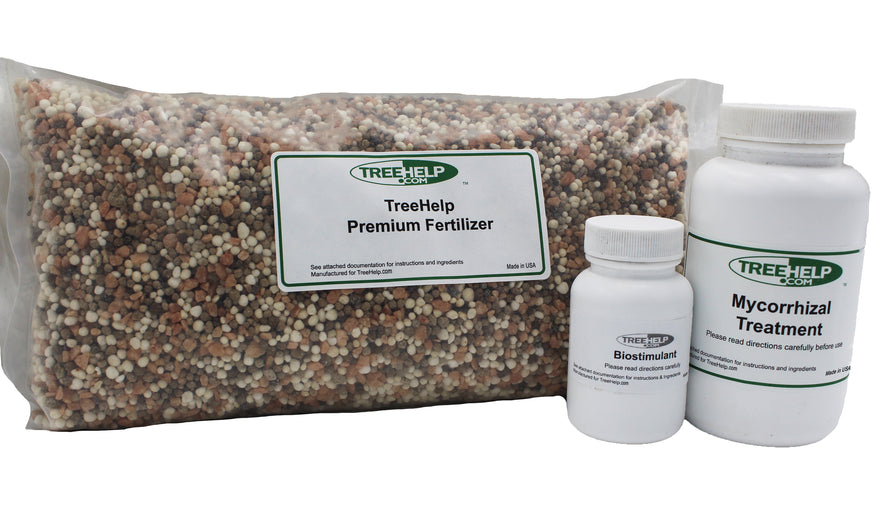
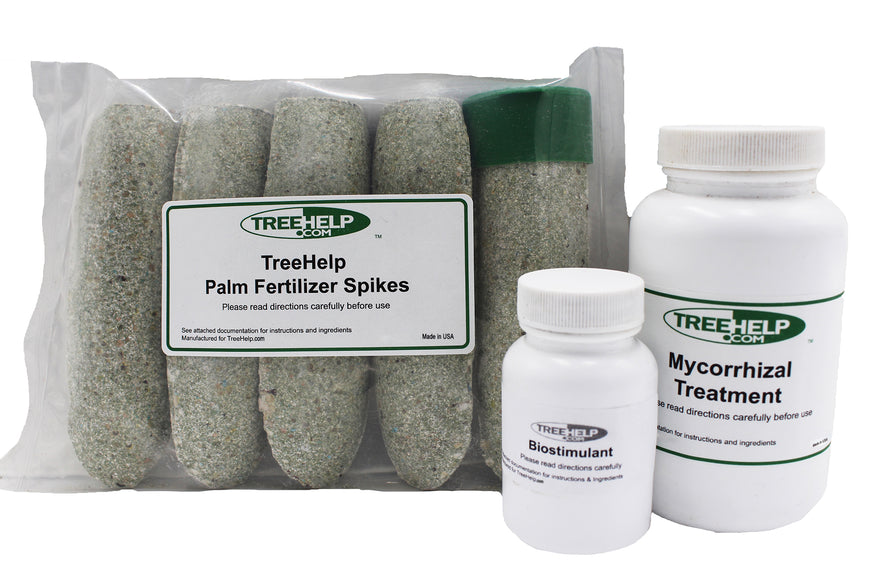
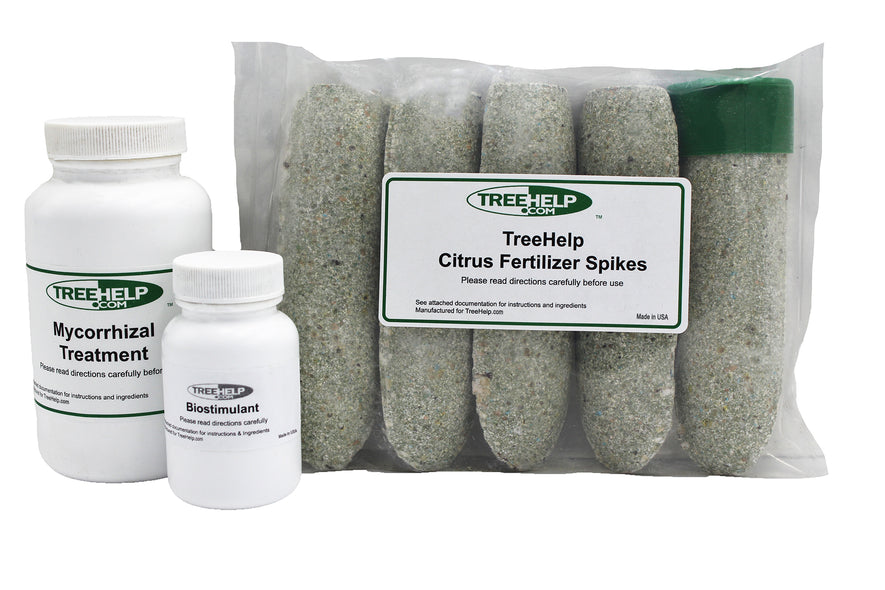
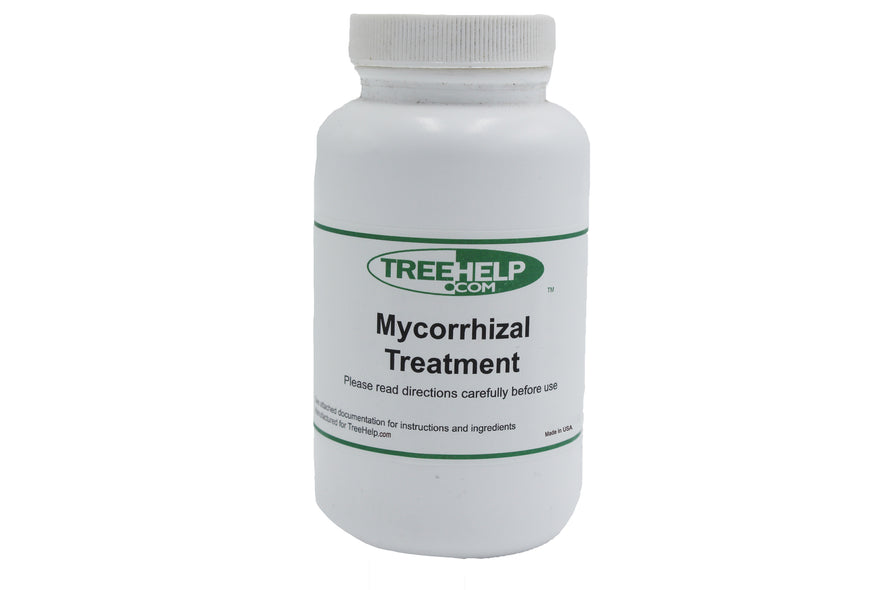
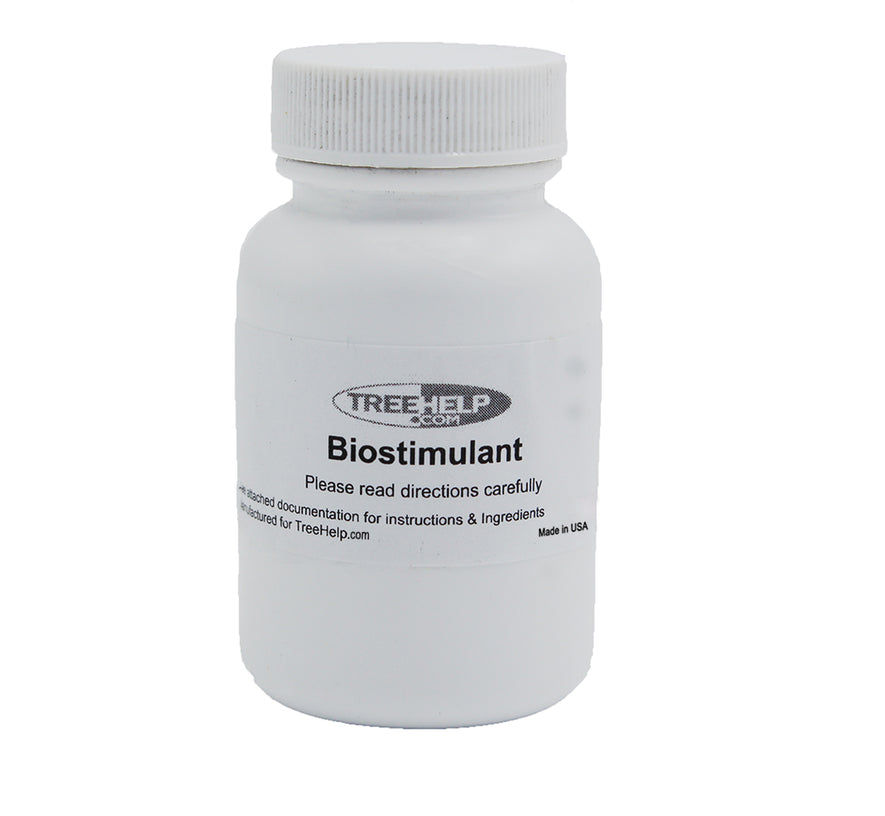
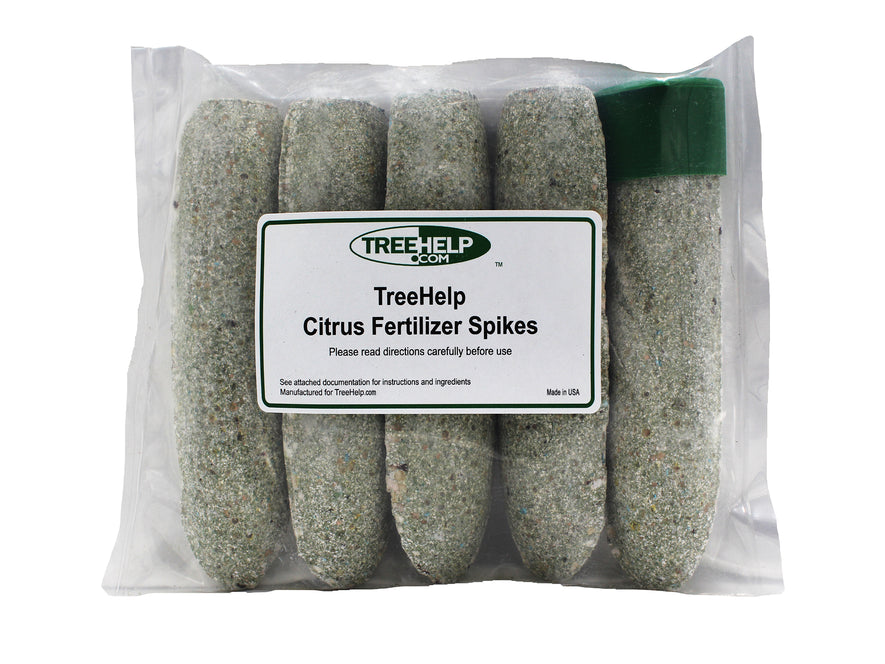
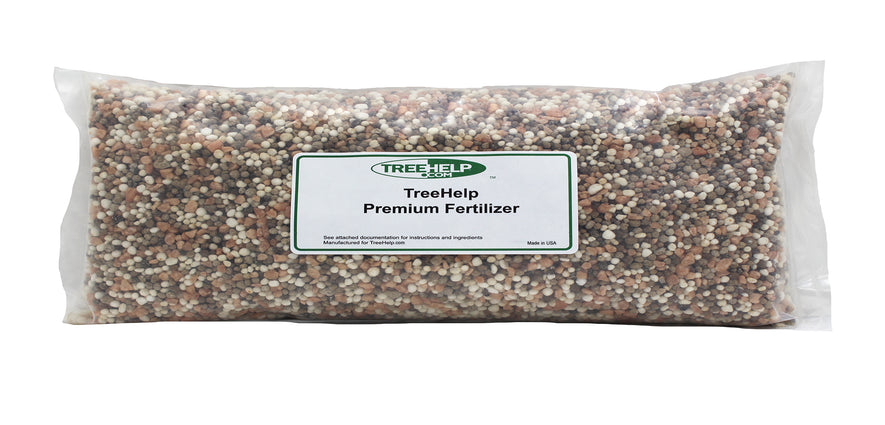
Proudly Made in the USA
TreeHelp developed easy-to-use Annual Care Kits to help homeowners maintain healthy and vibrant trees.
TreeHelp Annual Care Kits provide health supplements that are specific and appropriate to the type of tree that you care for. The supplements are designed to promote root-development which will have a lasting effect on the long-term health of your trees. Root development is vital for a tree because it gives the tree a reserve of strength and vitality that will help it survive through periods of drought, nutrient deficiency, insect infestation or disease. Too many fertilizers and other soil additives on the market focus on immediate impact - like "candy for trees". Our soil treatments, on the other hand, provide nutrients and organic elements that will help your tree today and for many years to come.
Some of our more popular kits include:
Palm
Contains 5 Complete Fertilizer spikes with high amounts of Manganese, Magnesium and Potassium, crucial to palm tree health.
Citrus
Contains specialized citrus fertilizer spikes loaded with micronutrients to improve tree health and fruit production
Birch
Birch trees are vulnerable to devastating insects such as Bronze Birch Borer. ?ÿThe Birch Kit is designed to promote stronger growth that helps make your tree less susceptible.
Customized kits are also available for over 90 other types of trees.
Having the right composition of minerals and organic material is extremely important in maintaining tree health. As a result, all of our kits are "custom-built" with specially selected components to suit a particular tree type. For example, the mycorrhizal fungi that benefits an oak tree will have no effect on a maple. And the fertilizer recommended for use on a pine would not be ideal for an elm. With our custom care kits, you can be certain you are applying the right treatments to your trees.
Step 1: Mycorrhizal Fungi
Mycorrhizal fungi is a relatively new soil treatment for trees. Co-existing with trees and plants in nature for hundreds of millions of years, these beneficial fungi provide a "safety net" for the tree in times of stress. By colonizing the roots and extending themselves further into the soil, the fungi enable the tree to take in more nutrients and moisture. The result is a healthier, more robust tree better capable of withstanding the many stressful conditions that exist in an urban environment and to better metabolize nutrients.
Because trees are often transplanted into non-native soils, and because urban soils have often been damaged by pollution and compaction, it is essential to re-introduce mycorrhizal fungi to the soil. Our custom care kits match the correct type of mycorrhizal fungi with specific types of trees.
Step 2: Fertilizer
Fertilizer will always be an important component of a comprehensive tree care program. But it must be done properly. Nutrient balances are difficult to achieve and improper fertilization can have drastically poor effects on trees. All too often, trees are fertilized with Nitrogen-rich, quick-release fertilizers. Not only does this have the potential of 'burning' the soil around the roots, it can also promote structurally weak growth that can attract insects and disease. Our fertilizers, on the other hand, slowly release a carefully measured balance of nutrients into the soil for a constant feeding that provides more long-lasting benefit to your tree.
The fertilizers that are included in our custom care kits have been specially selected to provide maximum benefit to a particular type of tree. The formulations are often very different from species to species and target different biological structures. The result will be a healthier, more vital tree.
Step 3: Biostimulant
TreeHelp Bistimulant is a dry, water-soluble green-up powder that is watered on tree roots as a root drench. BioSurge provides benefits to all types of trees, shrubs, and other garden plants. It is designed to increase the microbial activity in the soil around the root zone and encourage root and lateral bud development, improve the efficiency of a plant’s respiratory and photosynthetic systems and delay the aging process in plant tissue. The unique composition of ingredients includes beneficial bacteria, as well as humic acids extracts, soluble sea kelp, yucca plant extracts, amino acids and vitamins.

